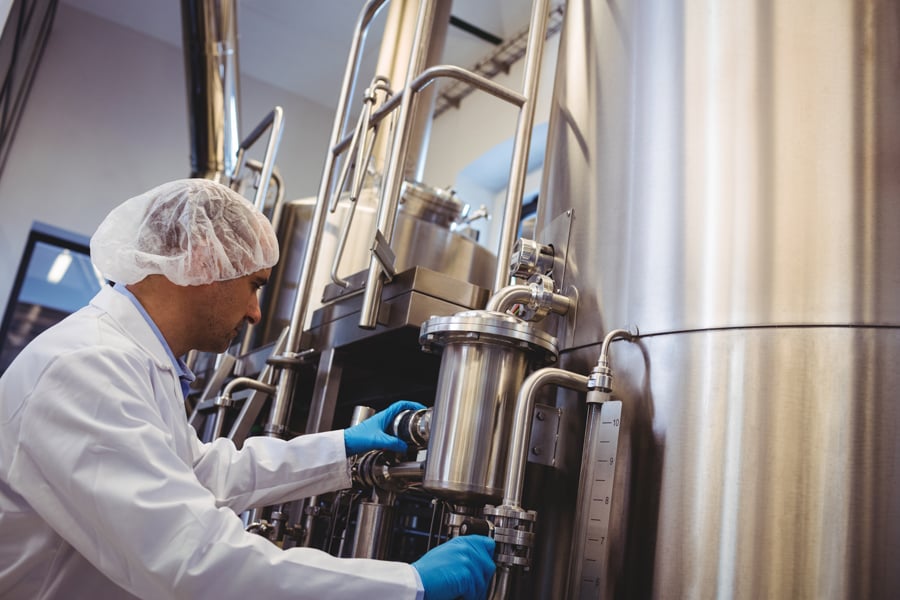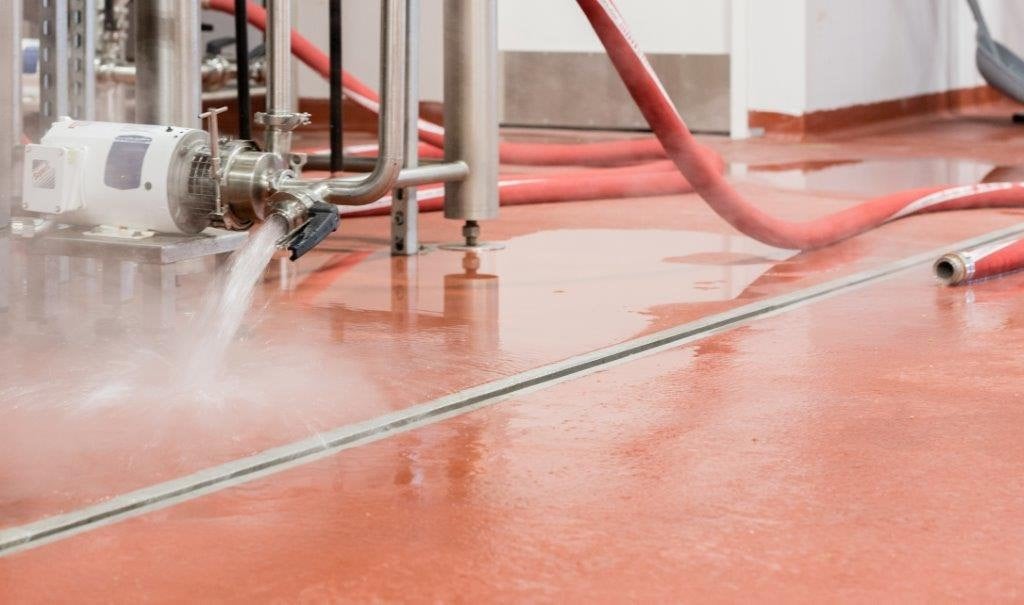Brewing beer isn't a simple task, and without the proper precautions, a brewery can have serious issues with safety and sanitation. Proper brewery sanitation is critical to creating beer that is safe to consume, while ensuring the facility is safe for workers.
There are many things that go into commercial brewery sanitation, and here are six of the most essential steps to follow.
1. Set up the Brewery Correctly

How a brewery is set up plays a significant role in how it functions. The proper setup isn't only about ensuring efficiency; it also helps maintain brewery hygiene.
To prevent contamination, the brewery needs to be set up so that the processing flow follows the brewing steps. It is also critical to have a "sanitation room" for workers to go through before entering the production area.
A sanitation room serves as a changing room to ensure that workers put on uniforms and protective clothing to prevent introducing outside bacteria into the brewery.
Another method for ensuring a proper setup is ensuring restrooms do not open directly into the production facility, in order to prevent bacteria from entering and landing on equipment or ingredients. You also want cleaning stations in strategic areas of the facility, with sinks, cleaning tools, and hoses to clean up messes quickly.
2. Seal Concrete floors
Sealing the floors sounds obvious, but it is critical to ensuring the best commercial brewery sanitation. Breweries can be messy places, and an unsealed floor will soak up liquids, leading to bacteria and mold growth. Heavy brewery equipment and constant foot traffic can also damage unsealed concrete floors, leading to safety issues.
Floor sealants need to have FDA approval for use in breweries, since they need to be hygienic. Common sealants in food and beverage facilities include epoxy, urethane, and MMA coatings. Breweries can also choose different coatings for different parts of the facility to have something more aesthetically appealing in areas where tours may pass through.
3. Keep Equipment Clean

Well-maintained equipment is vital to any food or beverage facility. Without machines to prepare grains, kettles, fermenters, and more, a brewery cannot make beer.
All of the equipment requires thorough cleaning and sanitization at the end of each day, which is an essential part of brewery cleaning and sanitation to prevent bacterial growth and contamination. Having high-quality stainless steel equipment can help minimize the risk of bacterial growth, but cleaning is always necessary.
These are just the obvious pieces of equipment. Rubber hoses are also commonly used throughout breweries and can host a wide range of harmful bacteria if they aren't cleaned properly. The cooling unit coils are also important to keep clean in order to ensure proper brewery hygiene and help with energy costs.
4. Label and Color-code Cleaning Supplies
Cleaning and sanitation is a critical part of running a brewery. It requires using the right cleaning tools and solutions to ensure the job is done effectively and efficiently. It is important that you do not use the same cleaning tools throughout the entire facility. Doing so could result in the spread of bacteria and contamination, leading to serious health hazards.
Each area should have designated equipment, including buckets, brooms, mops, and other necessary sanitation tools. Labeling and color-coding the various tools will prevent any cross-contamination. Doing so with any cleaning chemicals will also prevent any safety hazards.
5. Invest in a High-quality Drainage System

An efficient drainage system is easily one of the most crucial parts of any food or beverage facility. Slot Drain is a slotted trench drain system that has become increasingly popular in food and beverage facilities.
Unlike traditional trench drain systems, Slot Drain is a linear, pre-sloped system with a slim channel opening that doesn't require a grate cover, making it more durable and safe.
The 10,000 Series is made from food-grade stainless steel, a nonporous material that is resistant to bacteria. The metal is also temperature- and corrosion-resistant, making it ideal for brewery conditions. This model is also forklift-rated to withstand heavy traffic without issue.
Slot Drain is also easy to clean, making cleaning and sanitation a simpler task. Workers can use a brush and paddle to loosen any potential debris and push it to the catch basin, or use clean-in-place methods, including the Slot Drain Flush-Flo system to do the rest.
6. Evaluate Cleaning Methods Every 6 Months
Technology is constantly evolving, and so are brewery sanitation techniques. There is always room for a brewery to improve its cleaning and sanitation methods. By examining and evaluating your brewery's methods every six months, you will stay on top of the facility's hygiene.
Cleaning practices can affect a wide range of things within the facility, even the beer's taste. By keeping track of what is working and what isn't, and making the necessary changes, you can ensure the best success.
Keep Up Efficiency with Brewery Hygiene
Hygiene and sanitation are critical to a brewery's success. For large breweries, there are strict rules to abide by for commercial brewery sanitation. There are many things you can do to ensure effective sanitation, and the six steps covered above are some of the most critical steps to take.
Contact the brewery drainage experts at Slot Drain today for a custom quote and pricing information.


